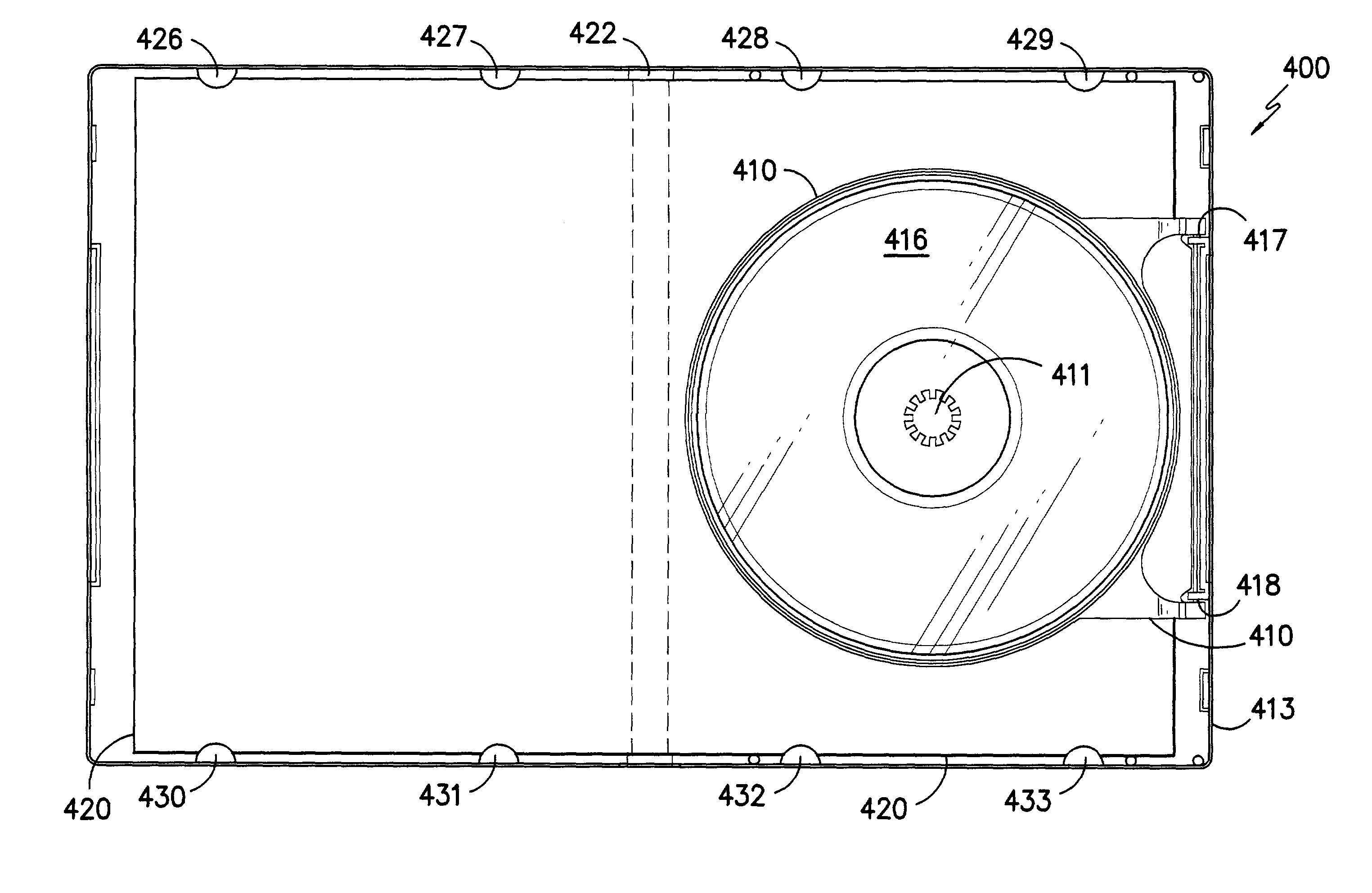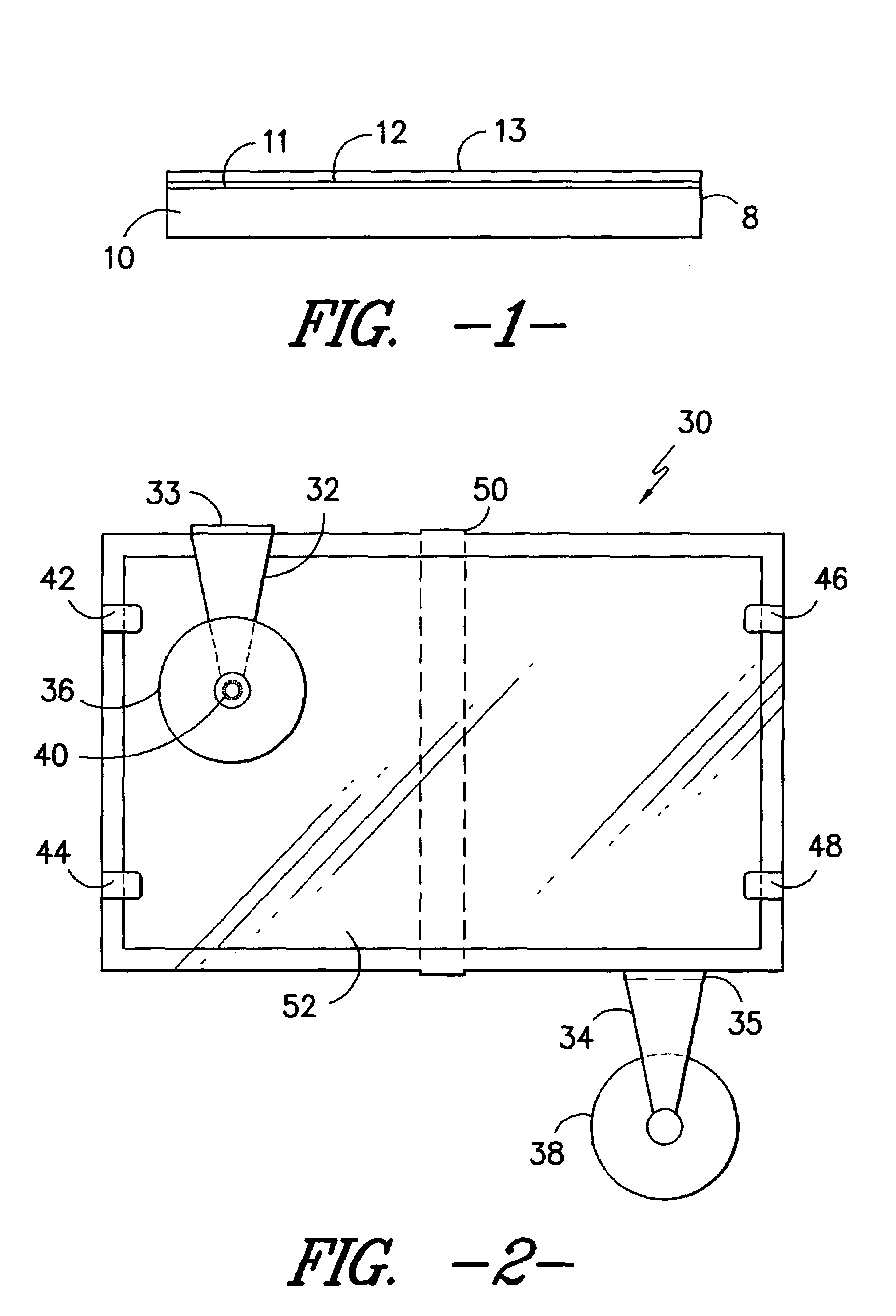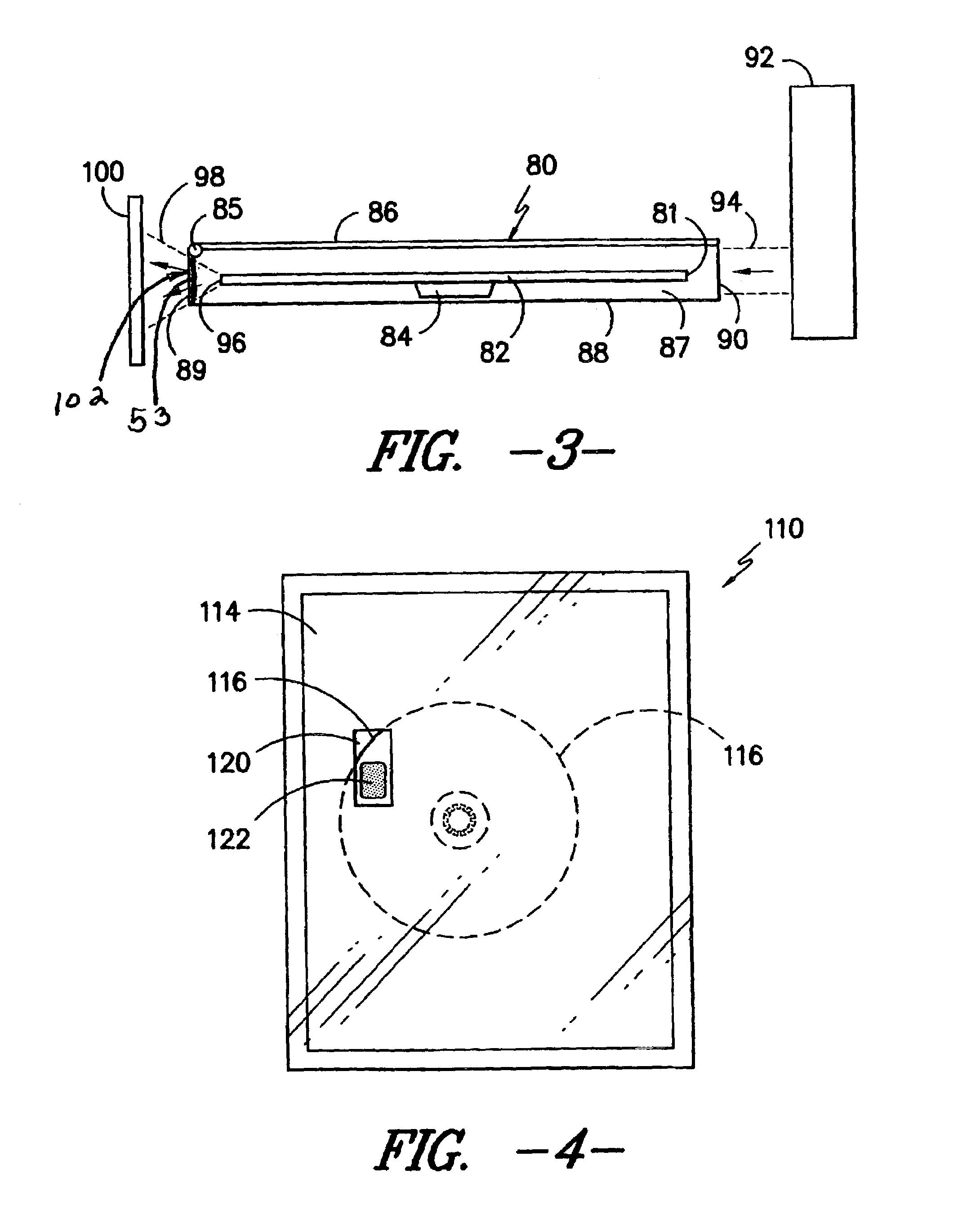Disc holding trays for antitheft purposes within optical or audio disc storage units
a technology for optical or audio disc storage units and storage trays, which is applied in the direction of instruments, transportation and packaging, and packaged goods types, etc., can solve the problems of preventing viewing of the internal portion affecting the use of the storage unit, so as to achieve convenient viewing and readable, improve the access effect, and widen the width
- Summary
- Abstract
- Description
- Claims
- Application Information
AI Technical Summary
Benefits of technology
Problems solved by technology
Method used
Image
Examples
Embodiment Construction
[0010]Such a novel configuration as defined above solves a number of different problems, mostly associated with cost issues, to provide a relatively inexpensive, yet effective storage unit for optical disc articles. Such optical disc articles are generally stored within thermoplastic containers that, in the past, have been, at least temporarily, aesthetically pleasing and protective. However, past compact disc (CD) storage units have utilized polystyrene which cannot be injection molded into living hinge arrangements, is highly susceptible to breakage from typical use situations, not to mention mere shipping / mailing mishandling and / or dropping, and is relatively expensive both from a base polymer standpoint and a labor intensive perspective. More recent boxes for optical discs (including, without limitation, compact discs, CD-ROM, CD-R, DVD, and the like articles) have been stored in a variety of thermoplastic containers, both when placed on a salesperson's shelf, as well as within ...
PUM
| Property | Measurement | Unit |
|---|---|---|
| distance | aaaaa | aaaaa |
| distance | aaaaa | aaaaa |
| distance | aaaaa | aaaaa |
Abstract
Description
Claims
Application Information
 Login to View More
Login to View More - R&D
- Intellectual Property
- Life Sciences
- Materials
- Tech Scout
- Unparalleled Data Quality
- Higher Quality Content
- 60% Fewer Hallucinations
Browse by: Latest US Patents, China's latest patents, Technical Efficacy Thesaurus, Application Domain, Technology Topic, Popular Technical Reports.
© 2025 PatSnap. All rights reserved.Legal|Privacy policy|Modern Slavery Act Transparency Statement|Sitemap|About US| Contact US: help@patsnap.com



